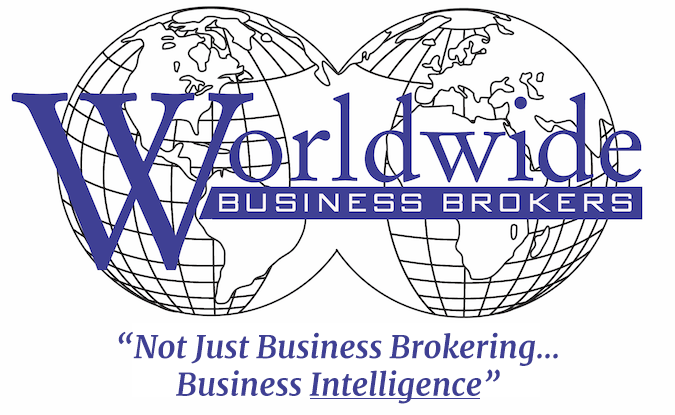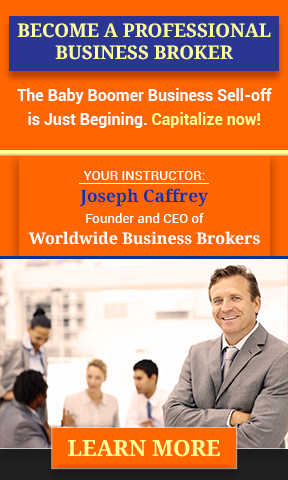Selling a Business: The Financial Structure
8 November 2021: Selling a Business/Financial Structure of the Deal
Selling a business is a process.
 It involves numerous issues, stages and aspects. One that is often left off the table – and one of the most important that a seller needs to be aware of early in the process – is the likely financial structure of the transaction. This is particularly true in the Main Street Market.
It involves numerous issues, stages and aspects. One that is often left off the table – and one of the most important that a seller needs to be aware of early in the process – is the likely financial structure of the transaction. This is particularly true in the Main Street Market.
I’ve written previously about the concept of managing the client’s expectations and understanding the likely financial structure of the transaction falls under that heading. It is, in fact, a major part of keeping the client properly appraised of what to expect.
When selling a business, sellers need to know early on what the financial structure is likely to look like and this is one of the most significant aspects of selling a business that a business broker must explain. Not doing so could cause a deal to blow up as everyone is on their way to the closing table.
What do I mean by the “financial structure of the transaction”?
I mean, who’s going to invest what parts of the acquisition price and how much the seller – who is usually our client in 90% of the transactions we do – is going to walk away with at closing.
The Seller’s Part
Here’s a general rule of thumb for you…
 Upwards of 80% of small business transfers involve some aspect of seller financing.
Upwards of 80% of small business transfers involve some aspect of seller financing.
Most lenders – and in the U.S., this includes the Small Business Administration (SBA), the guarantor that most lenders use to reduce the risk that financing small businesses involves – want the seller to stay in the game.
One reason is that they figure that, if the seller is invested in the buyer’s success, the lenders will get paid. After all, if the seller’s full return depends on the buyer’s success, it’s reasonable to assume that the seller will do what he or she can to assure that success.
_____________________________________________________________________________
Our course, “Learn How to Value and SUCCESSFULLY Sell Businesses“, teaches you how to value and sell businesses.
Become a Professional Business Broker…
Here’s another rule of thumb for you…
 Lenders generally expect a buyer to invest between 25% and 30% of the purchase price.
Lenders generally expect a buyer to invest between 25% and 30% of the purchase price.
This is one of the items business brokers must try to verify before we get too far down the road with a buyer; do they have the cash?
We can expect lenders to provide about 60% of the purchase price. And this is one of the other items we try to confirm as early as possible; does the buyer have the horsepower to get the necessary funding?
Confirming isn’t necessarily easy – nor are the results of our efforts always definitive. We go over how to do this in much more detail in our flagship course, “Learn How to Value and SUCCESSFULLY Sell Businesses©“. If it’s not done, you run the risk of getting far along in the process, possibly even through the due diligence process, only to discover that the buyer can’t get the funding.
More on that in a moment.
We’ve launched a coaching program specifically tailored to Realtors that want to sell businesses, business owners and to anyone that wants to become a business broker.
If you’d like to learn more, email me at jo*@*******************og.com
Obviously, if the the buyer has to come to the deal with 25% and the lender would be expected to fund 60%, the seller will be expected to carry back the remaining 15%.
Let’s Do Some Math
The seller needs to see the math upfront.
For the sake of an example, let’s say that you’ve listed a business that has a valuation of $1 million and that after some negotiation, you’ve been able to get the buyer to agree to that number. (If you’ve taken our Course, you know that the price the business should be brought to market for is different from the valuation number.)
So, let’s further assume that the financing works out – the buyer has the horsepower – and the due diligence turns up no disqualifying issues.
At the closing table, the math looks like this:
- $250,000 cash brought by the buyer (25% of the acquisition price)
- $600,000 provided by the lender (60% of the acquisition price)
- $150,000 carried back by the seller (the balance)
 From this complex and intensive mathematical exercise (sarcasm intended), the seller would appear to be walking away from the closing with a check of $850,000 – $150,000 less than he might have been expecting if he had not been prepared by the business broker what the financial structure of the transaction was likely to look like. “Managing the client’s expectations…”
From this complex and intensive mathematical exercise (sarcasm intended), the seller would appear to be walking away from the closing with a check of $850,000 – $150,000 less than he might have been expecting if he had not been prepared by the business broker what the financial structure of the transaction was likely to look like. “Managing the client’s expectations…”
But in addition to whatever cash they would walk away with, they’ll also be walking away with promissory note for $150,000.
But, of course, there’s more math that has to be done to make sure the seller knows where he or she will end up. And it’s at this point that the broker, if they haven’t been properly managing those expectation, risks coming out on the short end.
There are closing costs involved in the sale of a business.
Such costs include, among others, attorney’s and accountant’s fees, the filing of financing statements, any fees required from the seller by the lender and, of course, our fee; the broker’s commission or “success fee”. It’s at this point that our fee is at its greatest risk.
If the broker has not taken the steps necessary – as described in our course – this is when the seller, finally seeing the actual net proceeds of all his or her hard work of the past five, ten or 15 years, could realize that the amount is a lot less than they were anticipating.
And the only way to get some it back is to say to the broker, “I’m not going to finalize this deal unless you reduce your commission.”
The Bottom Line
Managing the client’s expectations is serious business. It is the only way to assure that you will come away from the deal with your client’s admiration and recommendation as well as with your commission and dignity intact.
Making sure that the seller knows the likely financial structure of any transaction – specifically, what they are likely to walk away with – is critical to your success as a business broker.
What I’ve outlined in this post are generalities and they pertain primarily to the Main Street Market and, to a great extent, financial buyers.
Deal structures are different – and often more complex – in the Lower Middle Market and when the buyer is strategic. They have different objectives and structure their acquisitions in a manner that “feeds” those objectives.
But for most business brokers and sellers in the Main Street Market, the financial structure of your deals will be roughly as outlined in this post.
If you have any questions or comments on this topic – or any topic related to business – I’d like to hear from you. Put them in the comments box below. Start the conversation and I’ll get back to you with answers or my own comments. If I get enough on one topic, I’ll address them in a future post or podcast.
Searching
This week’s “Searching” item comes from an acquisition group looking to do a “roll-up”. The industry channel is healthcare with specific focus on medical spas. They’re looking for $300,000 in Discretionary Earnings and the targets can be located anywhere in the U.S.
If any of you know of something that might fit, please let me know.
I’ll be back with you again next Monday. In the meantime, I hope you have a safe and profitable week.
Joe
 #business #businessacquisition #sellabusiness #becomeabusinessbroker #businessbrokering #businessvaluation #MergersandAcquisitions #buyabusiness #sellabusiness #realtor #realestateagents
#business #businessacquisition #sellabusiness #becomeabusinessbroker #businessbrokering #businessvaluation #MergersandAcquisitions #buyabusiness #sellabusiness #realtor #realestateagentsThe author is the founder of Worldwide Business Brokers and holds a certification from the International Business Brokers Association (IBBA) as a Certified Business Intermediary (CBI) of which there are fewer than 1,000 in the world. He can be reached at jo*@*******************og.com

